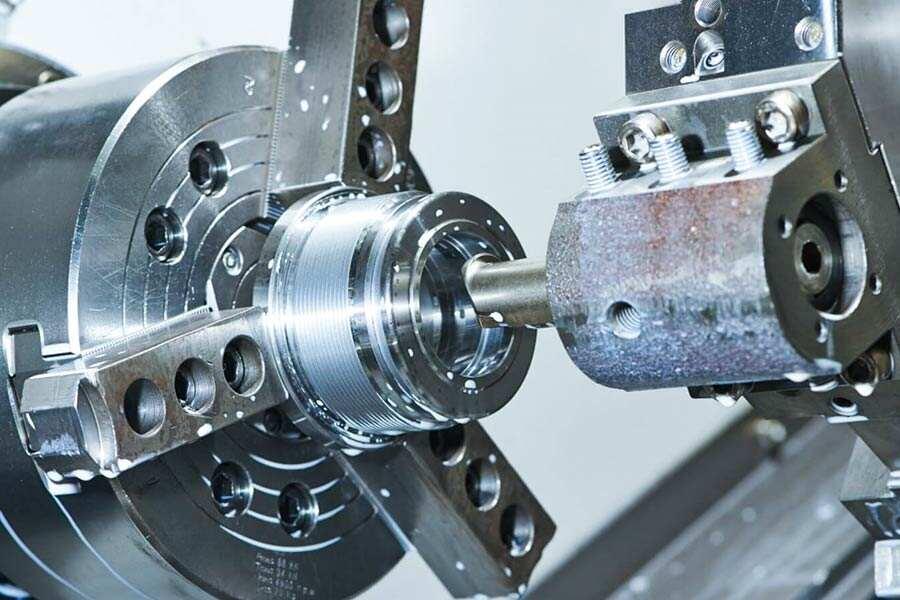Subtractive processes play a central and indispensable role in the world of manufacturing, where design blueprints are transformed into solid parts. They act as precision “carving knives”, systematically removing material to give metals, plastics and other raw materials precise shapes, sizes and surface characteristics. Whether you're new to the world of machine building or an experienced engineer looking to optimize your production, an in-depth understanding of turning, milling, drilling, grinding, boring, broaching, sawing, EDM and laser cutting is essential. EDM and Laser Cutting are nine fundamental and critical processes that are the cornerstones of core manufacturing capabilities and optimal production paths. Let's explore these process blades that have shaped the face of modern industry and learn about their principles, benefits and applications.
Turning
1. Core Definition
Turning is a machining process in which the workpiece is rotatedand a fixed tool is used for cutting, mainly for machining rotary parts (cylindrical, conical, end face, threads, etc.).
2. Typical application scenarios
Automotive industry: rotary parts such as drive shafts, pistons, wheel hubs, etc.
Machinery manufacturing: machine tool spindles, screws, bearing rings
Energy industry: turbine shafts, hydraulic cylinder barrels
Aerospace: engine shafts, landing gear components
3. Core Advantages
- High efficiency: suitable for mass production, single clamping can complete multiple processes (e.g. cylindrical, end face, grooving, threading).
- High accuracy: precision turning up to IT6 grade (tolerance ±0.01mm), Ra 0.4-1.6μm.
- Low cost: compared with milling/grinding, turning tool cost is lower, suitable for economic machining.
- Adaptable: can process metals (steel, aluminum, titanium), plastics, composite materials, etc.
4. Turning classification
| Classification | Type | Features |
|---|---|---|
| Processing features | External turning | Processing the outer surface of shaft parts |
| Internal turning (boring) | Processing sleeves and cylinder bores | |
| Face turning | Processing the end face (plane) of the workpiece | |
| Thread turning | Processing threads such as bolts and screws | |
| Automation level | Ordinary lathe | Manual operation, suitable for small batches |
| CNC lathe | High precision, automation, suitable for mass production | |
| Turning and milling center | Integrated turning + milling to reduce clamping errors |
5. Key process parameters
Cutting speed (Vc): Carbide tool turning steel parts usually 100-300m/min
Feed (f): rough turning 0.2-0.4mm/r, fine turning 0.05-0.1mm/r
Depth of cut (ap): rough turning 1-5mm, finish turning 0.1-0.5mm
6. Development Trends
High Speed Turning (HST): spindle speed 10,000-20,000rpm to improve efficiency
Hard turning: alternative to grinding, direct machining of hardened steel (HRC 60+)
Intelligent turning: Integrated AI tool wear monitoring (e.g. Sandvik CoroPlus®)
Example: Automotive driveshafts are CNC turned with roughing (IT10, Ra 3.2μm) and then finishing (IT7, Ra 0.8μm), with a machining time of about 5 minutes per piece, which is a 30% increase in efficiency over conventional grinding.
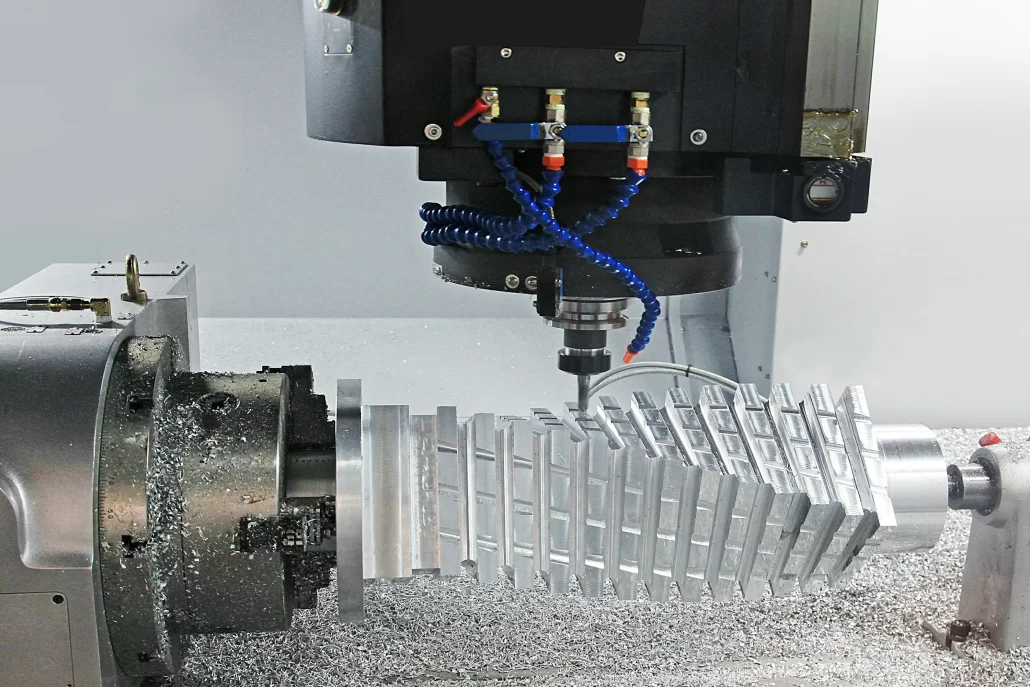
Milling
Milling is a manufacturing process for cuttingand machining workpieces by rotating multi-flute tools, which is widely used for precision machining of flat surfaces, curved surfaces, grooves and other features. The following is an explanation of its key points:
(1) Core Definition
utilizes a rotating multi-flute tool (milling cutter) to cut the workpiece tooth by tooth, removing material through the relative motion of the tool and the workpiece, and allows for the machining of flat surfaces, curved surfaces, gears, threads, and other complex geometric shapes. Unlike turning, in milling the tool rotates while the workpiece is usually stationary or in feed motion.
(2) Typical application scenarios
Consumer electronics:CNC precision machiningof metal housings for cell phones, requiring high surface quality (Ra 0.8μm or less).
Mold and die manufacturing: Surface machining of cavities (e.g. injection molds, die casting molds), relying on multi-axis simultaneous milling
Aerospace: efficient milling of aircraft structural parts (titanium wing beams)
Automotive industry: engine block surface milling, gearbox gear processing
3. Precision and surface quality
Dimensional accuracy: IT7-IT10 grade (IT7 tolerance about ±0.015mm, IT10 about ±0.1mm)
Surface roughness: Ra 0.8-3.2μm, high-speed precision milling up to Ra 0.4μm
Influencing factors: tool runout (<0.005mm), machine rigidity, cutting parameter optimization
4. process subdivision type
| Classification | Type Example | Features |
|---|---|---|
| Surface features | Plane milling | Use face milling cutter, high efficiency |
| Contour milling | Profiling complex shapes | |
| Feed direction | Climb milling | Good surface quality, long tool life |
| Conventional milling | Stable cutting, suitable for hard materials | |
| Tool movement | Three-axis milling | Basic processing, low cost |
| Five-axis linkage milling | Can process complex surfaces such as impellers |
5. Key technical parameters
Cutting speed (Vc):Carbide tool machining aluminum alloyup to 300-800m/min
Feed per tooth (fz): finishing usually 0.01-0.05mm/tooth
Axial depth of cut (ap): roughing 5-10% tool diameter, finishing 0.1-0.5mm
6. Industry trends
High speed milling(HSM): spindle speeds of 20,000-60,000rpm, increasing efficiency by 3-5 times
Micro-milling: for precision medical devices, tool diameter <0.1mm
Smart machining: integrated force sensors monitor tool wear in real time (e.g. Marposs system)
Case: The titanium center frame of the iPhone 14 Pro was milled using5-axis CNC milling, going through three processes: rough milling (IT10), semi-finish milling (IT9), and finish milling (IT7), and ultimately realizing a mirror-like surface with Ra 0.6μm, with a single-piece machining time of about 25 minutes.
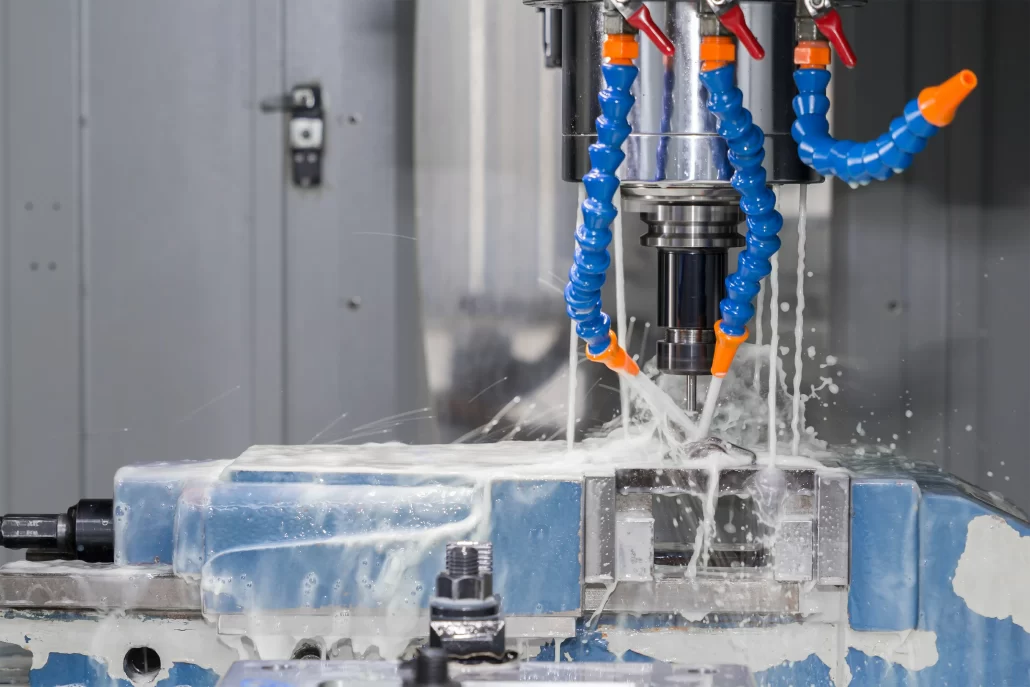
Drilling
1. Core definition and process characteristics
Drilling is a manufacturing process that uses a rotating cutting tool(twist drill, step drill, etc.) to machine a circular hole in a solid material. It is a subtractive process. Its core characteristics are:
Axial cutting: the main cutting force is along the axis of the drill
Limited chip removal: the chips need to be discharged through the drill groove, which is easy to cause blockage
Difficult heat dissipation: about 50% of the heat is taken away by the chips, and the rest is transferred to the workpiece/tool
2. Typical industrial applications
| Industry | Application Case | Special Requirements |
|---|---|---|
| Automobile Manufacturing | Engine Cylinder Oil Hole (Φ3-10mm) | Deep Hole (L/D=15-20) High Straightness |
| Electronic Industry | PCB Microhole (Φ0.1-0.3mm) | Hole Diameter Tolerance ±0.01mm |
| Aerospace | Aircraft Wing Spar Weight Reduction Hole (Φ5-20mm) | Titanium Alloy Processing, No Burr Requirements |
| Energy Equipment | Nuclear Power Main Pipe Cooling Hole (Φ50-100mm) | Stainless Steel Deep Hole Processing |
3. Key technology limitations and breakthrough programs
Limitations:
Limitations on depth-to-diameter ratio: conventional twist drill L/D ≤ 10 (exceeding the limit will lead to deflection, vibration of the tool)
Hole quality defects: exit burrs (Burr), hole wall chatter mark (Chatter Mark)
Tool wear: poor centering due to cross blade wear
Advanced solutions:
Deep hole machining technology:
Gun drilling (L/D ≤ 100): asymmetric design with single cutting edge, high pressure oil cooling (7-20 MPa)
BTA drilling (L/D≤250): casing type chip removal, machining efficiency increased by 3 times
Micro-hole processing technology:
Laser drilling (Φ0.01-0.5mm): for PCB through-hole (CO₂ laser)
EDM drilling (Φ0.3-3mm): cooling holes for carbide molds
4. Optimization of drilling process parameters
| Parameters | Normal drilling | High-speed drilling | Micro-drilling |
|---|---|---|---|
| Cutting speed Vc | 20-50m/min(HSS) | 80-150m/min (carbide) | 30-60m/min (carbide) |
| Feed per revolution f | 0.1-0.3mm/r | 0.05-0.15mm/r | 0.01-0.05mm/r |
| Cooling method | External cooling (emulsion) | Internal cooling (8MPa) | Mist cooling (MQL) |
5. Precision and quality improvement technology
Guidance technology:
Drill sleeve guidance (position accuracy ±0.02mm)
Laser tool setting system (pre-positioning error <0.005mm)
Post-processing process:
Reaming (IT7 grade, Ra 0.8μm)
Extrusion honing (deburring, Ra improvement of 50%)
The process is developing towards ultra-deep holes (L/D>300), nanoscale micropores and intelligent adaptive processing, and has breakthrough applications in new energy battery pole piece processing, chip packaging and other fields.
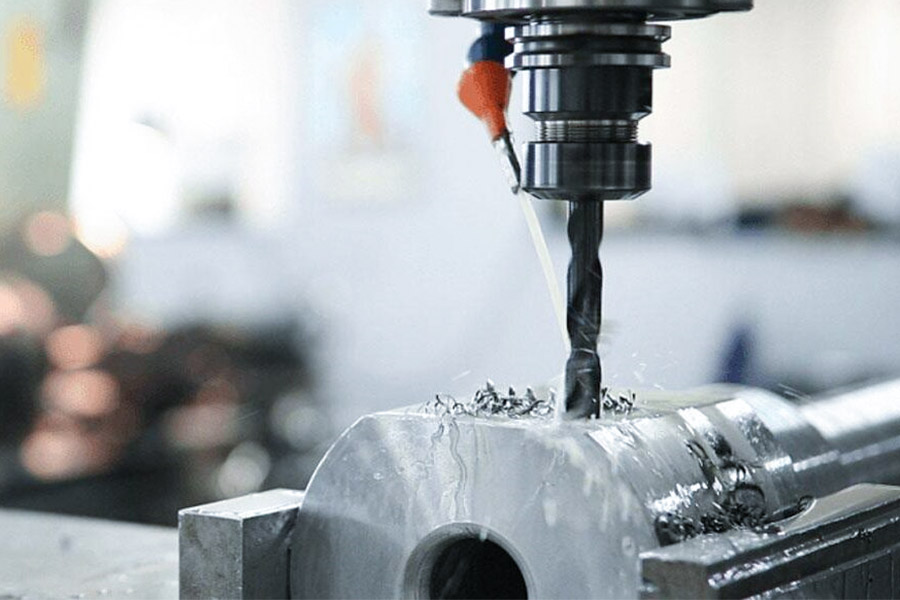
Grinding
1. Core Definition and Process Characteristics
Grinding is an ultra-precision machining process that utilizes a high-speed rotating grinding wheel(abrasive grits + bond) to make micro-cuts on workpieces, and its core characteristics include:
Multi-flute cutting: each grit is equivalent to a micro-cutting edge (grit size #80-#3000)
Extremely thin depth of cut: 0.1-10 μm depth of cut with a single grit.
Cold cutting: 60% of the heat is carried away by the chips (better heat dissipation than turning).
2. Typical industrial applications
| Application fields | Typical cases | Key indicators |
|---|---|---|
| Precision bearings | Bearing raceway grinding (HRC62) | Roundness ≤ 0.5μm, Ra 0.05μm |
| Medical equipment | Surgical blade mirror grinding | Blade radius ≤ 0.01μm, no burrs |
| Optical components | Glass lens curved surface forming grinding | Surface shape accuracy λ/4 (λ=632.8nm) |
| Aerospace | Turbine blade tenon groove precision grinding | Profile tolerance ±0.003mm |
3. Grinding process classification
| Classification dimension | Process type | Features |
|---|---|---|
| Processing surface characteristics | Surface grinding | Electromagnetic chuck clamping, V-shaped grinding wheel (Ra 0.1μm) |
| External cylindrical grinding | Center positioning, can process slender shafts (Φ0.1mm) | |
| Internal cylindrical grinding | Small grinding wheel (Φ3-20mm), planetary motion | |
| Grinding wheel type | Corundum grinding wheel (Al₂O₃) | General type, processing steel parts |
| CBN grinding wheel (cubic boron nitride) | Hard material processing (HRC>55), 10 times longer life | |
| Diamond grinding wheel | Ceramic/carbide processing, particle size up to #8000 |
4. Key process parameters
Grinding wheel line speed:
Ordinary grinding: 30-45m/s
High speed grinding (HSG): 80-200m/s (special wheel required)
Workpiece speed:
Precision grinding: 0.1-1m/min
High efficiency deep grinding (HEDG): up to 100m/min
Depth of cut control:
Rough grinding: 5-20μm/stroke
Fine grinding: 0.1-1μm/stroke
5. Surface quality control
Roughness range:
Ordinary grinding: Ra 0.4-0.8μm
Precision grinding: Ra 0.1-0.4μm (mirror surface)
Ultra-precision grinding: Ra <0.05μm (electrolytically sharpened grinding wheels required)
Metamorphic layer control:
White layer thickness <2μm (burns avoided by optimized cooling)
6. Advanced technological developments
Ultra-precision grinding:
Aerostatic spindle (radial runout <0.05μm)
Online dressing technology (laser dressing accuracy ±1μm)
Intelligent grinding:
Power monitoring anti-collision systems (e.g. Studer monitoring system)
Digital twin optimization parameters (wheel life prediction)
Composite machining:
Combined grinding-electrolytic machining (crack-free machining of hard and brittle materials)
7. Typical machining example
Bearing raceway machining:
Using CBN grinding wheels (#800 grit)
Linear speed 60m/s, workpiece speed 500rpm
Achieved Ra 0.05μm, roundness 0.3μm
Artificial joint spherical grinding:
5-axis linkage grinding machine
Contour accuracy ±0.005mm, surface sterile grade polishing
Grinding technology is developing towards nano-level precision, intelligent adaptive control and green processing, and continues to break through the limits of precision in areas such as semiconductor wafers and micro-electromechanical systems (MEMS).
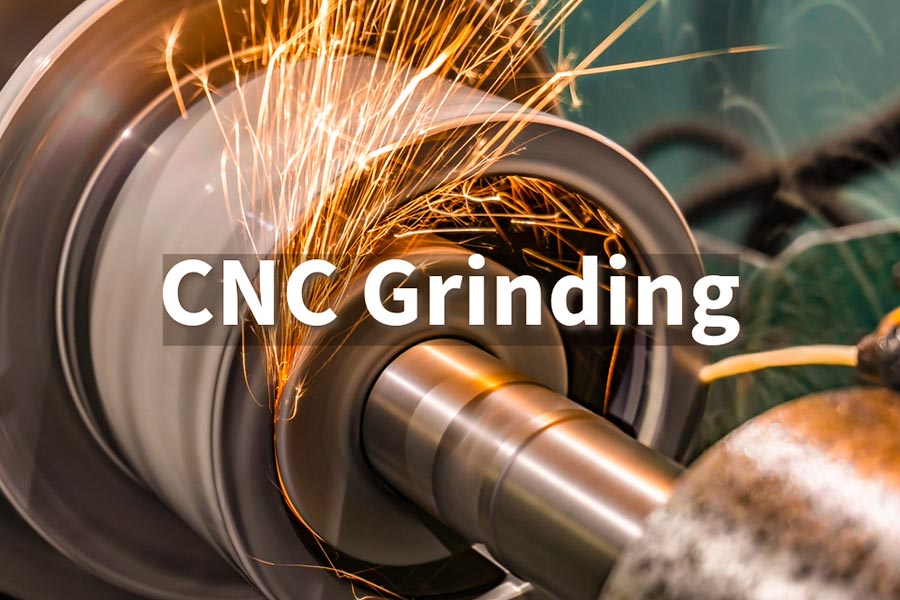
Boring
Boring is a machining process that uses a rotating boring tool to precisely trim prefabricated holes. It is mainly used to improve the dimensional accuracy (up to ±0.005mm) and shape tolerance of holes. It is typically used in hydraulic valve body precision hole processing, artillery barrel rifling correction, etc. This process can effectively correct hole position deviations, achieve high roundness (<0.002mm) and low roughness (Ra 0.4μm), and is one of the core means of hole finishing, especially suitable for the finishing needs of large-diameter deep holes and special-shaped holes.

Broaching
Broaching is an efficient processing technology that uses a multi-tooth broach to directly form complex internal contours in a single linear stroke. It is typically used in batch processing of special-shaped structures such as automotive spline shafts and gun trigger slots. Its core advantage lies in its one-time forming capability, which can simultaneously ensure IT7-level accuracy (±0.02mm) and Ra 1.6μm surface quality. Although the cost of customized tools is relatively high, the single-piece processing cost is significantly lower than milling/gear shaping processes when the mass production exceeds 5,000 pieces, which is particularly suitable for the needs of large-scale precision special-shaped groove processing.
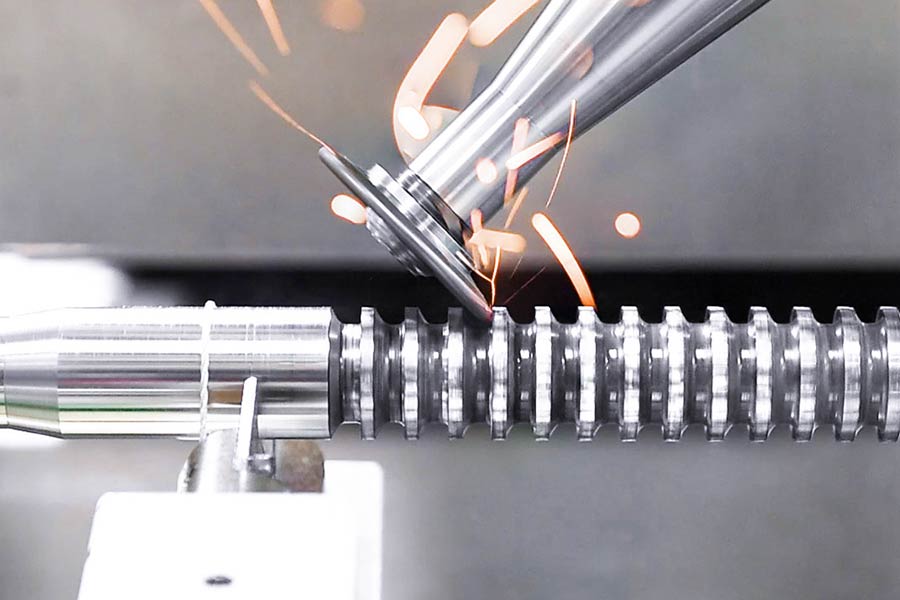
Sawing
Sawing is a process that uses a cutting tool with saw teeth to split materials. It is mainly used for cutting metal profiles (such as aluminum profiles) and steel stock splitting. Compared with circular saw cutting, band saw cutting has significant energy-saving advantages, which can reduce energy consumption by 40% while maintaining high cutting efficiency. It is especially suitable for rough processing and pretreatment of large quantities of metal materials.
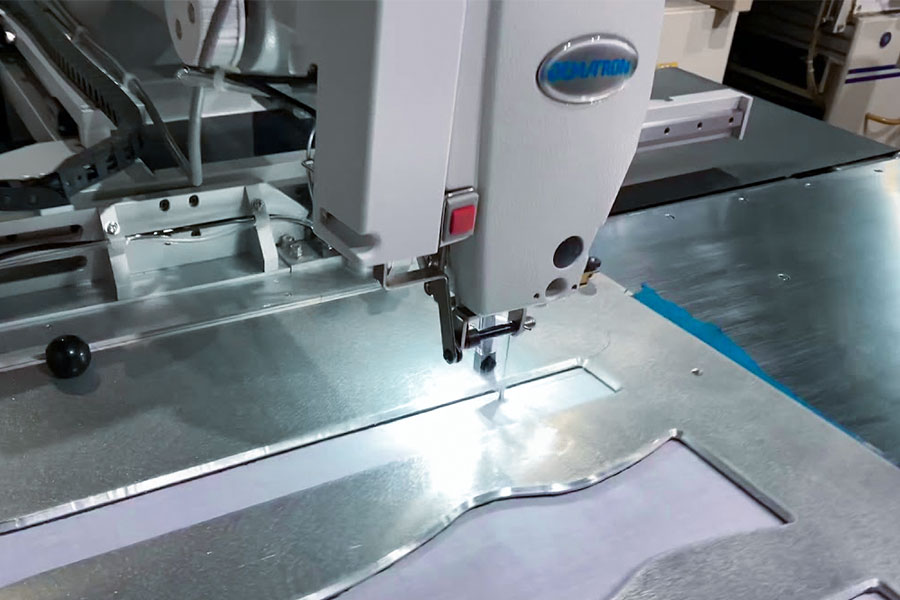
Electrical Discharge Machining
Electrospark machining (EDM) is a non-contact special processing technology that uses pulse discharge to corrode conductive materials. It is particularly suitable for processing superhard materials (such as cemented carbide) and complex cavities (such as injection mold textures) that are difficult to process with traditional cutting. This process can achieve extremely high precision of ±0.005mm (slow wire) by precisely controlling the discharge energy, and is not limited by the hardness of the material. It is irreplaceable in the processing of key components in the fields of mold manufacturing, aerospace, etc.
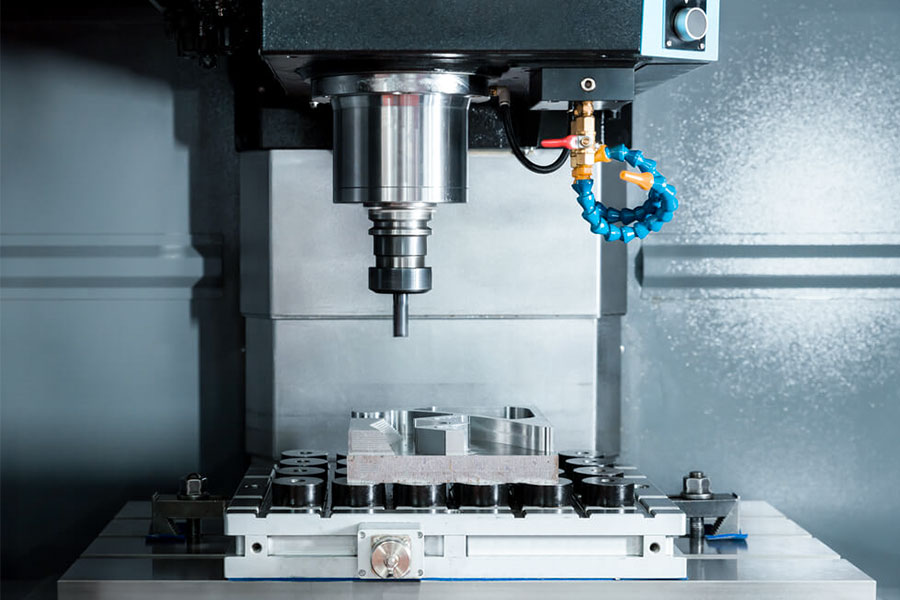
Laser Cutting
Laser cutting is an advanced process that uses high-energy laser beams to perform non-contact precision cutting of materials. It is particularly suitable for high-efficiency blanking of automotive sheet metal parts (such as door contour cutting) and fine hollowing of jewelry and other precision processing scenarios. With its high energy density, this process can reach a speed of 10m/min when cutting 3mm stainless steel plates while maintaining a processing accuracy of ±0.1mm. It has the advantages of both high efficiency and high flexibility, and has become one of the core processing methods of modern precision manufacturing.
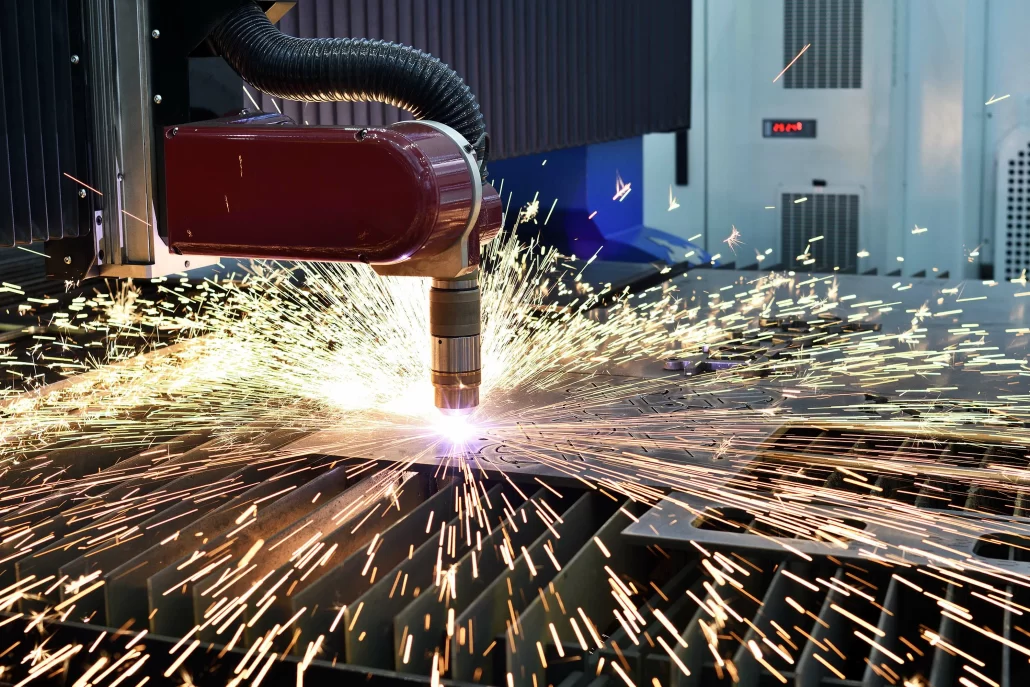
Summary
From the rotary art of traditional turning to the light-energy blade of laser cutting, these nine machining processes form the core technological skeleton of modern manufacturing. Each process is like an exclusive tool in a precision toolbox - turning efficiently shapes rotating bodies, milling flexibly conquers complex surfaces, EDM softly overcomes rigidity, and laser cutting sculpts without contact - each of them has its own role and collaborative innovation. With the development of composite machining technology and digital intelligent manufacturing, the boundaries of these processes are blurring and fusing (e.g., mill-turn composite centers can synchronize 80% of the processes).
Understanding their essential differences and application scenarios not only helps engineers choose the optimal machining program, but also promotes process innovation and breakthroughs in manufacturing limits. In the future, these classic processes will continue to be deeply combined with new materials and AI technology, and will be revitalized in cutting-edge fields such as micro-nano manufacturing and space parts.
📞 Phone: +86 185 6675 9667
📧 Email: info@longshengmfg.com
🌐 Website:https://lsrpf.com/
Disclaimer
The content of this page is for informational purposes only.LS SeriesNo representations or warranties of any kind, express or implied, are made as to the accuracy,completeness or validity of the information. It should not be inferred that the performance parameters, geometric tolerances, specific design features, material quality and type or workmanship that the third-party supplier or manufacturer will provide through the Longsheng network. This is the responsibility of the buyerAsk for a quote for partsto determine the specific requirements for these parts.please Contact us Learn more information.
LS Team
LS is an industry-leading companyFocus on custom manufacturing solutions. With over 20 years of experience serving more than 5,000 customers, we focus on high precisionCNC machining,Sheet metal fabrication,3D printing,Injection molding,metal stamping,and other one-stop manufacturing services.
Our factory is equipped with more than 100 state-of-the-art 5-axis machining centers and is ISO 9001:2015 certified. We provide fast,efficient and high-quality manufacturing solutions to customers in more than 150 countries around the world. Whether it's low-volume production or mass customization,we can meet your needs with the fastest delivery within 24 hours. chooseLS TechnologyIt means choosing efficiency, quality and professionalism.
To learn more, please visit our website:www.lsrpf.com

FAQs
1. For which parts is Turning suitable? Why is it the first choice for rotary parts?
Turning is the efficient machining of rotationally symmetrical parts such as shafts, disks and bushings (e.g. threads, tapers) by means of workpiece rotation + linear feed of the tool. Its advantage lies in the completion of multi-feature machining (external circle, end face, groove) in a single clamping, and the dimensional accuracy can reach ±0.01mm, surface roughness Ra 1.6μm, especially suitable for automotive drive shafts, hydraulic fittings and other mass production.
2.What is the core difference between milling and turning? When to choose milling?
Milling is tool rotation + workpiece movement, suitable for machining planes, curved surfaces, shaped contours (such as mold cavities); while turning is workpiece rotation, specializing in rotary body. The advantage of milling is multi-axis linkage (such as five-axis milling complex impeller), but the efficiency is lower than turning. Selection basis: asymmetric parts choose milling, rotary body choose turning.
3. Why boring (Boring) than drilling (Drilling) is more suitable for precision hole processing?
Drilling can only guarantee IT10 ~ IT12 level of accuracy (± 0.1mm), while boring through the adjustable boring tool to correct the size of the prefabricated holes, roundness, positional degree, the accuracy of up to IT6 level (± 0.005mm). For example, hydraulic valve body holes need to be bored to ensure the coaxiality of each hole system, while drilling is only used for roughing.
4. Laser Cutting (Laser Cutting) compared to the traditional cutting process what subversive advantages?
Laser cutting cuts metal/non-metal without contact or mechanical stress, with a kerf width of only 0.1mm (plasma cutting is about 1mm), and at very high speeds (10m/min for 3mm stainless steel). Its flexibility supports complex contours (e.g., shaped holes in automotive sheet metal), but the high equipment cost makes it suitable for high value-added products.


